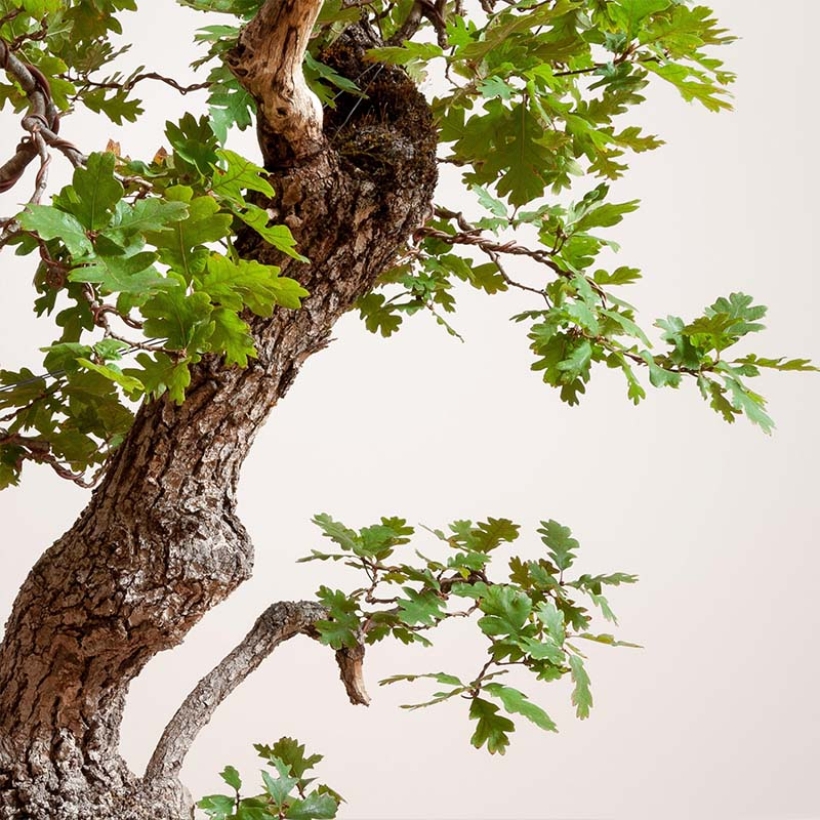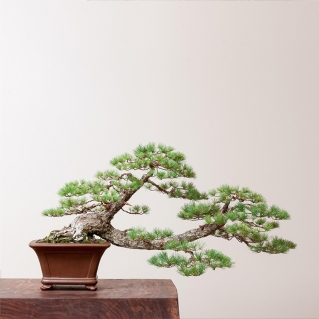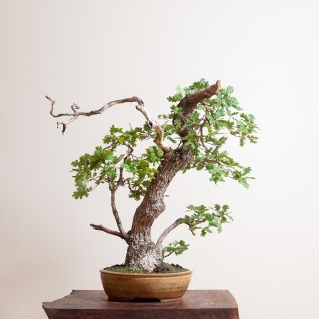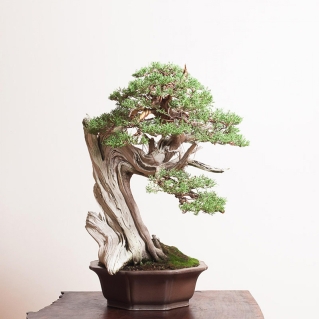White Oak Bonsai
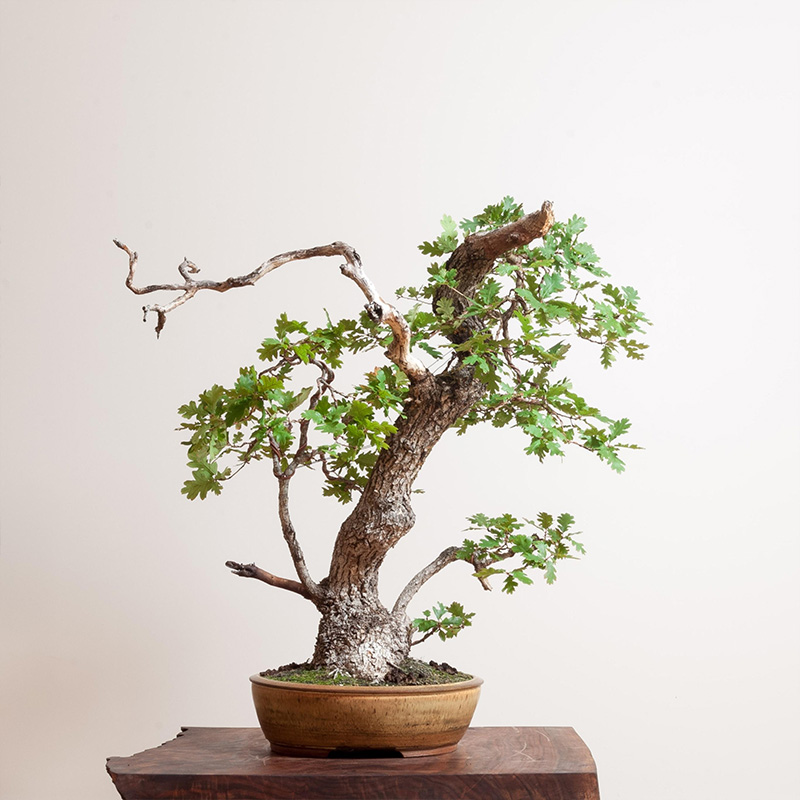
General Information
White oak bonsai belong to the Quercus family, which is one of the most diverse species of plant in the world.
White oak bonsai trees have a tremendous and stately appearance—deep, dark green lobes with show-stopping form. Potential hollows in the trunk and moderately coarse branching systems are the features that make the white oak like no other.
White oak tends to be medium to large size and extremely tolerant to the heat, sun, and cold, which we will touch on more in the care instructions for this one-of-a-kind bonsai.
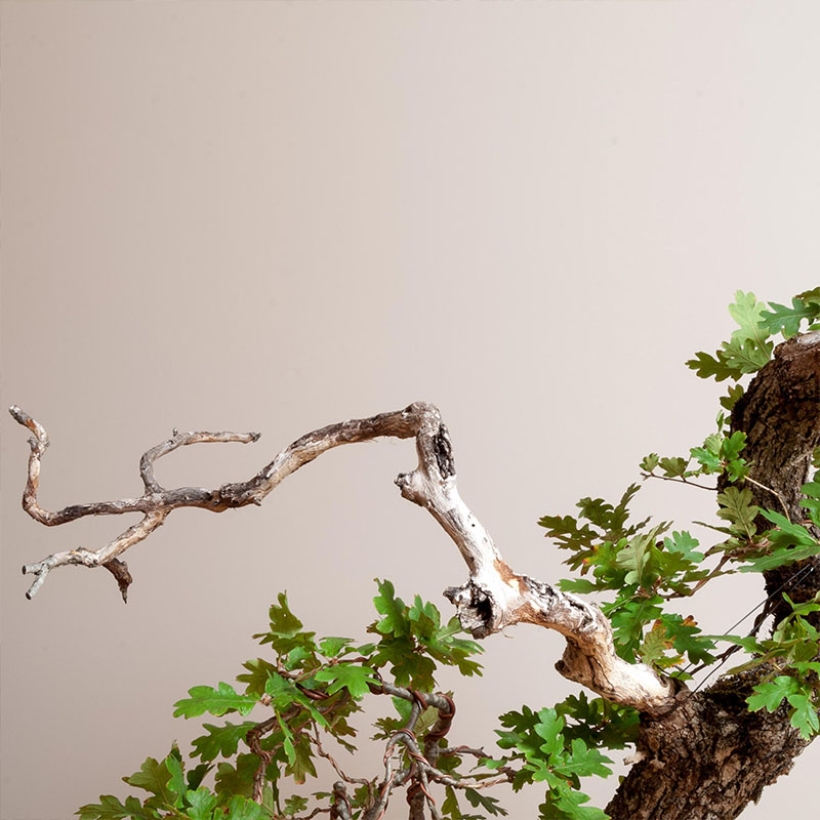
Caring for White Oak Bonsai
Watering
White oak requires far less watering than other broadleaf deciduous trees.
The needs for white oak are similar to juniper bonsai in terms of water and oxygen. They must dry out between waterings to maintain the balance that allows them to thrive and generate that ultimate health.
Sun Exposure
White oak requires full sun throughout the year. In anything less than a full sun environment, the brachlets will start to die back, fine tweaking will be lost, and there will be a lopsided distribution of strength between the top and the bottom apex in the lower branches of the tree.
Temperature
Unlike other broadleaf deciduous trees, the white oak is very tolerant of heat. As long as the leaves are hardened off and it’s cultivated in a proper container, white oak can withstand temperatures up to 100° Fahrenheit without protection.
On the other hand, white oak is also surprisingly tolerant of cold conditions and can thrive without protection in temperatures as low as 10° Fahrenheit.
Fertilizing
Light to moderate fertilization is all that is needed for this type of bonsai. Since white oak is slow-growing, aggressive fertilizing can not only be pointless but counterproductive.
Pruning
Pruning is a very nuanced practice for this slow-growing and slow developing species. Pruning should take place in the spring, right as the buds swell.
You’ll want to prune the elongated branches back to reveal the secondary and tertiary interior branching. You’ll also want to remove the strongest terminal tips of your finer branchlets to transition the energy from one single shoot at the tip of the branch to multiple shoots on the interior pushing to generate ramification.
You’ll also want to prune your white oak in the late spring or early summer to reduce overly elongated shoots and adjust the energy and the strength of the tree. Pruning back elongated shoots will evenly distribute the mass throughout the tree.
The leaves that you have on the tree after pruning are what will exist over the course of the year, so it’s imperative not to prune too aggressively.
Wiring
White oak bonsai do not respond well to wiring in the fall. Wiring should be done in the spring as the buds begin to swell on the tree.
Repotting
A solid akadama mixed soil is great for accommodating the white oak’s oxygen needs.
If you live in a wet environment, adding two parts akadama soil, one part pumice, and one part lava can help add more oxygen to the plant and reduce water retention. With this practice, there will be less nutrition in your container which can lead to a decrease in potential metabolic gains that solid akadama soil typically provides. Cultivating your white oak in a slightly deeper container can help compensate for this.
White oak should never be potted in shallow containers. A deep container is needed to allow fungi and bacteria to flourish within the root system. This symbiotic relationship helps maintain a balance of water and oxygen that generates the ultimate health of the tree.
Repotting should take place closest to the shortest day of the year when there is less daylight. This should occur in January just as the buds are starting to swell.
Propagation
If the leaves of your white oak are opening past the point of being able to repot the plant, propagation is in order. Propagation for white oaks is done by seed.
Pests/Disease
White oak is susceptible to Phytophthora, though it is not nearly as susceptible as other orchid species. Aside from Phytophthora, pest and disease issues are few and far between with white oak fertilization.
White Oak Bonsai FAQS
Many species in the Quercus family perish during the repotting process because of their sensitive roots. The best time to repot white oak is just as the buds are starting to swell. From the time buds start to swell, you have about a ten to a fourteen-day window to successfully repot.
Absolutely not. White oak bonsai only produce a single flush of growth throughout the year.
Leaving a white oak wired over wintertime can lead to a significant amount of branch loss. Wiring white oak in the fall can lead to similar results.
The best time to wire white oaks is in the spring just as the tree becomes active. The wire should then be removed before the leaves drop in the fall to avoid branch loss.
